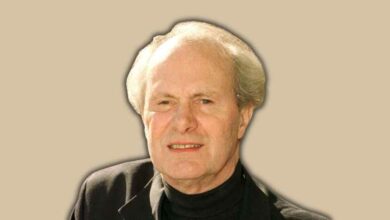David Henty: The Extraordinary Journey of a Master Art Forger Turned Celebrated Copyist

The name David Henty evokes both fascination and curiosity throughout the international art world. Known as one of the most masterful art forgers of the past few decades, Henty’s life story is one of transformation, skill, controversy, and remarkable re-invention. His path from criminal activities to becoming a respected copyist and celebrated painter captures the imagination of art enthusiasts, collectors, historians, and even casual readers intrigued by how such a talent evolves.
Today, David Henty is acknowledged for his extraordinary ability to replicate the works of renowned artists with a precision that can mislead even trained eyes. His paintings pay homage to artistic giants from various eras. Yet behind the craft lies a deeper narrative: a turbulent early life, time in prison, remarkable self-education, and a reinvention that transformed him from an underground forger into a public artistic figure.
Early Life and Turning Points
Born in 1958 in the United Kingdom, David Henty did not follow the traditional path of an aspiring young artist. His early years were shaped by challenges and decisions that led him far from creative fields. Unlike many painters who begin sketching or studying art from a young age, Henty’s initial ambitions and direction in life were completely unrelated to art.
His troubles with the law emerged during the 1990s. Henty was imprisoned in the UK for producing forged passports and later in Spain for selling stolen vehicles. These experiences could have ended his future, but instead they unexpectedly laid the foundation for an entirely new direction in his life.
It was within the walls of prison that Henty’s artistic identity began to form. With limited access to resources and an abundance of time, he turned to books on art history, materials, and painting techniques. He practised obsessively, studying the brushwork, style, colours, and patterns of some of history’s most iconic artists. What started as a pastime soon revealed a rare and exceptional natural ability.
Prison became his training ground. He experimented with pigments, taught himself the behaviour of oil paint, and grew particularly skilled at understanding how artworks age. This knowledge would later play a central role in his reputation as a master forger.
Mastering the Art of Forgery
After gaining his freedom, David Henty continued to refine his technique. He painted relentlessly, focusing not just on reproduction but on embodying the essence of historic artists. He immersed himself in their psychology, lifestyles, and artistic evolution.
Henty could imitate a wide range of styles, from the swirling strokes of Van Gogh to the bold shapes of Picasso, the delicate tones of Modigliani, the colour richness of Caravaggio, and even the raw expressive lines of Jean-Michel Basquiat. His ability was not limited to one era or movement. He seemed to understand the internal rhythm of every artist he studied.
Determined to improve, he also researched materials used by artists in specific historical periods. He sourced aged canvases, recreated traditional pigments, and adopted techniques to simulate natural ageing. His attention to detail extended to varnish texture, craquelure patterns, surface oxidation, and even the way dust settled on older pieces.
As his skill sharpened, some of his works entered the market through informal platforms. Buyers believed they were purchasing genuine or previously unknown pieces. Although this activity was illegal, it demonstrated just how convincing his creations were. Specialised collectors and experts, who made careers analysing authenticity, sometimes struggled to determine the difference between a Henty forgery and an original masterpiece.
Techniques That Set Him Apart
David Henty’s reputation rests not merely on his ability to copy images but on the depth and precision of his technique. His creative process involves a combination of artistic intuition, historical knowledge, and scientific understanding of materials.
Authentic Materials
He often uses canvas, pigments, and tools similar to those used in the original period. Such authenticity gives his work the weight and feel of a genuine antique painting.
Artificial Ageing
Henty skilfully replicates the natural ageing process. This includes creating fine cracks, altering surface texture, applying varnishes, and using controlled temperature exposure. These methods mimic the passage of decades or even centuries.
Brush Stroke Mastery
Each artist has a unique motion in their brushwork. Henty studies this with forensic precision, allowing his hand to move with the same flow and instinct as the original master. This makes his paintings feel alive rather than mechanically copied.
Emotional and Mental Immersion
He often describes entering the mindset of the artist. He imagines their emotions, influences, challenges, and intentions at the time of creating the original piece. This deep psychological immersion gives his work an authenticity that cannot be replicated through imitation alone.
Transformation Into a Legitimate Copyist
A major transformation in David Henty’s life occurred when he chose to leave behind illegal forgery and build a career in the open. Instead of passing his work off as original masterpieces, he began selling them clearly labelled as “after” or “in the style of” the referenced artist. This transparency marked a new direction.
His past became part of his public identity. Rather than hide it, he embraced it. Media outlets, authors, and art enthusiasts were intrigued by his story. Documentaries featured him, interviews explored his life, and galleries began openly showcasing his works.
Collectors now pursue his pieces not because they believe they are original works by famous artists, but because they admire his exceptional skill. His paintings are valued as artworks in their own right, created by a man who understands both the craft and history of painting at an extraordinary level.
One of the most remarkable moments of his later career involved a painting purchased at a boot sale. Initially believed to be a lost Picasso, it was eventually revealed to be a painting by David Henty. Even experts had been taken in by its quality, proving once again the depth of his mastery.
Public Fascination with His Life Story
People across the world are fascinated by David Henty for several reasons.
The Romance of the Forger
Art forgery is an alluring topic. It combines mystery, intellect, beauty, and deception. Stories of forgers challenge the systems that guard artistic authenticity and expose vulnerabilities within auction houses and museums.
A Story of Redemption
Audiences admire individuals who turn their lives around. Henty moved from a troubled path to recognition and respect, demonstrating reinvention at its highest level.
Extraordinary Talent
Even critics who disapprove of forgery cannot deny the level of talent he possesses. His ability to recreate works with such accuracy places him among the most technically accomplished copyists in the world.
Challenging the Art Market
His story raises thought-provoking questions:
What gives art its value?
Is it the artist’s hand? The signature? The story? The authenticity certificate?
Or is it the visual impact and craftsmanship alone?
Ethical and Legal Considerations
Ethics remain a central aspect of discussions about David Henty. While his past involved illegal activities, his present work is legitimate. The distinction is crucial.
Forgery is illegal when intended to deceive.
Copying is legal when presented honestly.
Henty’s openness ensures that collectors know exactly what they are purchasing. His work respects the law and the integrity of buyers. His journey also highlights the need for better systems within the art market, as even experts can be misled by highly skilled imitators.
Legacy, Influence, and Continued Impact
Today, David Henty holds a unique place in modern art culture. His legacy rests on more than his skill; it is built on the impact he has had on discussions about authenticity and artistic value.
He continues to produce works in the style of great masters, which are collected globally. Many admire his pieces as affordable alternatives to priceless originals, while others value them as artworks created by a man whose life story adds meaning and depth.
His influence extends to aspiring artists, historians, and even investigators who specialise in uncovering art fraud. His life demonstrates how skill, intention, and presentation can dramatically shape one’s relationship with the art world.
Conclusion
David Henty’s journey from a troubled young man to a world-renowned copyist is a powerful example of transformation, resilience, and extraordinary talent. His ability to replicate historic artworks remains unparalleled, yet his true achievement lies in how he reshaped public understanding of forgery, authenticity, and artistic value.
Through honesty, mastery, and reinvention, he has earned a place in art history not as a criminal but as a gifted artist who turned his past into a unique and respected profession. His story continues to inspire and challenge the modern art world, ensuring that the name David Henty will remain significant for years to come.



